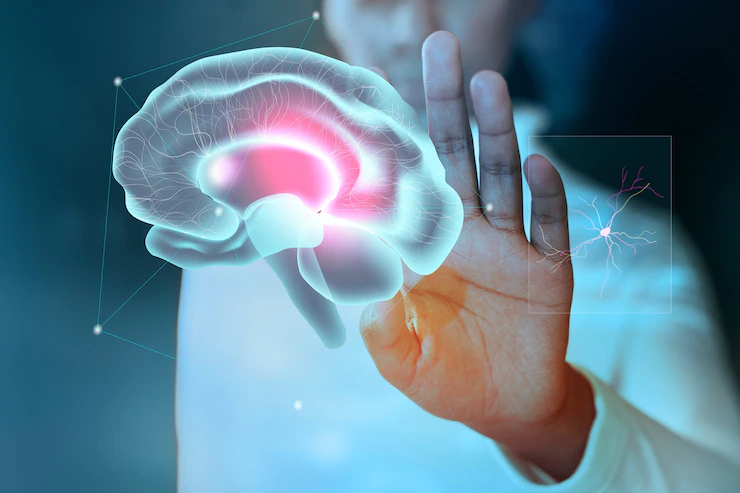It’s important to all of us, yet we rarely talk about it: dealing with mental health is fraught with misunderstandings. What mental health means and how it is influenced – here we have compiled the most important information.
What is mental health?
When we say “health above all!” When we wish someone for their birthday, we usually mean that he or she shouldn’t catch the flu, don’t get injured while playing sports and stay free of more serious illnesses. Many of us may only have physical well-being in mind when it comes to our birthday wishes, but mental health is also part of everyone’s health.
According to the World Health Organization, health describes a state of physical, mental and social well-being. So, it’s about us doing well. Mental health is also important for this. Because, like physical well-being, mental health affects our ability to think, feel, learn, work, relate, and participate in society.
But many people still think of mental illness first when they talk about mental health. The entire spectrum of mental well-being can range from good mental health through isolated crises to severe mental illness. The transitions are mostly fluent. Just as our physical condition is exposed to constant changes.
What is the mental health of children and young people around the world?
It is estimated that every seventh young person between the ages of ten and 19 (13 percent) is living with a diagnosed mental illness such as depression or anxiety disorders. This corresponds to 80 million young people aged 10 to 14 and 86 million adolescents aged 15 to 19. Despite the large number of children and young people affected, the topic is still taboo for many people. Dealing with mental illness and mental health is characterized by misunderstanding and stigma. Mental suffering is often not taken seriously enough or is overlooked.
At the same time, there is a huge gap between the need for services and the resources available to protect and support children’s mental health: in some of the world’s poorest countries, governments spend less than US$ 1 per person on average for mental health treatment the end. In developing and emerging countries, there is an average of 0.1 psychiatrist for every 100,000 inhabitants who specialize in children and adolescents. In developed countries it is 5.5 per 100,000.
To what extent has the corona pandemic exacerbated the situation?
A year and a half after the outbreak of the pandemic, the effects on the mental health of children and adolescents are clearly noticeable. For many, not being able to go to school for months and not being able to play with friends has taken its toll. In addition, there are health or financial worries in the families. Many children and young people feel lonely, scared or worried about their future.
According to a survey conducted by UNICEF and Gallup research in 21 countries in the summer of 2021, one in five people (19 percent) between the ages of 15 and 24 said they often feel depressed or have little interest in things or doing something. In Germany, this was said by one in four respondents (24 percent).
Who or what influences children’s mental health?
Mental health is shaped by a combination of numerous factors. These include genetic factors as well as the living environment and the experiences children have. There are three areas that affect mental health:
- the “child’s world” defined by their home and educational environment
- the “world around the child”, for example security and attachment in day care centers, schools and communities
- the “world as a whole”, which is determined by social factors such as poverty, natural disasters, conflicts or discrimination
These factors can have both positive and negative influences. For example, on the one hand, school can be a place where children make friends, experience security and learn important skills to strengthen their psyche. On the other hand, they can also experience bullying, racism, peer pressure or performance stress there.
Other influences are mutually dependent, such as poverty and mental health: poverty can lead to mental health problems, and mental health problems can lead to poverty. Globally, around 20 percent of all children under the age of five live in extreme poverty – this figure alone shows how many children are at risk of developing mental health problems.
But: It is important to emphasize that crises and living conditions affect children very differently and that every child deals with them differently.
What role does the family play in mental health?
A loving and supportive family environment is one of the strongest protective factors for mental health in childhood and adolescence. Violence, on the other hand, is one of the greatest risk factors.
Incidentally, the influence of parents begins even before the birth of a child and is often shaped by social and economic conditions. For example, a poor general nutritional situation can result in malnutrition during pregnancy, which can lead to underweight in newborns. In turn, being underweight can affect brain development and thus mental health.
How does parenting violence affect children’s mental health?
Violence against children can have devastating consequences and affect both the physical and psychological development of the children and young people affected. Many develop less self-confidence due to the experience of violence and suffer from anxiety or even depression. The violence can also affect their ability to learn or form positive relationships. In the long term, this can affect their educational opportunities and professional development.
It is all the more important to raise social awareness of violence against children and to promote offers that support parents and children, such as advice for parents and childcare services.
How can mental health be strengthened?
We rarely talk about mental health. A first step would therefore be to finally make it an issue and to understand it for what it is: a decisive factor for our well-being.
There are also numerous protective factors that can already strengthen mental health in childhood: Loving caregivers and positive relationships with peers can help to reduce the risk of mental impairments and disorders. Support offers for mothers and fathers can, for example, strengthen the bond between parents and children, promote non-violent upbringing and improve children’s cognitive development.
In addition, social security programs can indirectly support the mental health of girls and boys by improving school attendance, nutrition, and access to health and social services. In humanitarian crises, rapid interventions can provide immediate relief for depression, anxiety and post-traumatic stress, thereby strengthening the mental health of children and young people.
What has to happen now?
From UNICEF’s perspective, it is important to promote the mental health of children, young people and carers, to protect children at risk and to support particularly vulnerable children. There is an urgent need for more investment in all aspects of society, not just healthcare, and a whole of society approach to protecting, empowering and supporting children and young people.
Measures to promote mental health in the areas of health, education and social security should be expanded on the basis of scientific knowledge. These include parenting programs that promote flexible, loving support and care for children and the mental health of parents and caregivers. Schools should support mental health through support services and a positive learning environment.
Breaking the silence on mental illness, fighting stigma and promoting mental health education. The experiences of children and young people must be taken seriously.




